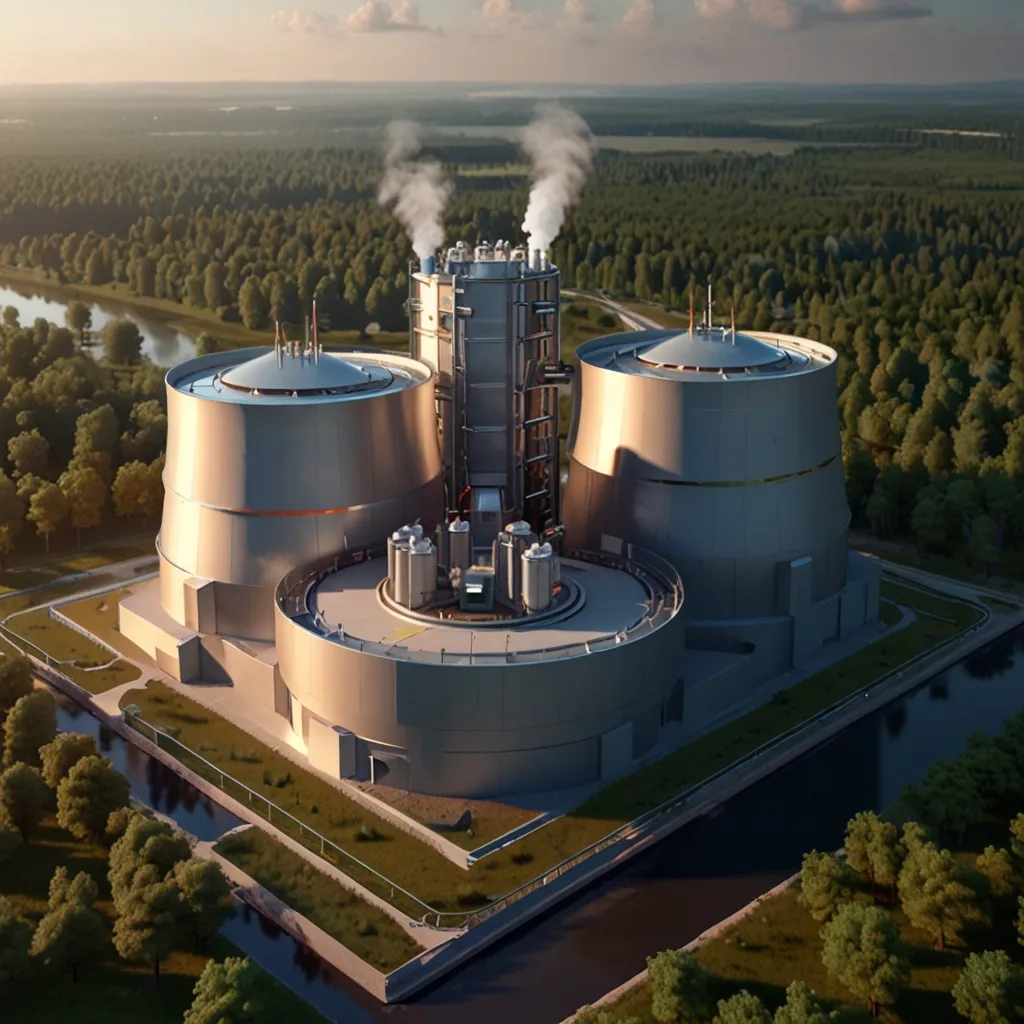In 1973, natural gas, oil, and coal supplied 87% of the world’s energy. By 2019, this figure decreased to 81%, largely due to the shift towards green energy. Surprisingly, this green energy uptick didn’t come from solar or wind but from nuclear power. During the same period, nuclear energy rose from 1% to 5% of global energy consumption.
When people think of nuclear power, grim tales from Chernobyl in 1986 or Fukushima in 2011 often come to mind. There’s also a common but baseless fear that nuclear power plants might explode like atomic bombs. While that’s impossible, an uncontrolled meltdown could indeed release dangerous radiation. The handling of radioactive waste, which remains hazardous for thousands of years, is another concern.
Yet, imagine a technology making such fears obsolete, rendering nuclear power plants virtually meltdown-proof and producing far less radioactive waste. This technology isn’t some distant dream; its basic principles were proven over 50 years ago. Could this be our silver bullet against climate change?
Let’s dive into how molten salt nuclear reactors, a promising technology, could revolutionize our power landscape. But first, let’s understand how conventional power plants work.
A power plant, traditional or nuclear, operates by heating a liquid, typically water, to produce steam that drives a turbine to generate electricity. The liquid then cools and reuses in a continuous cycle. In coal plants, burning coal heats the water, generating electricity but also releasing greenhouse gases and pollutants.
Nuclear power plants, however, use the process of fission in a reactor core to split heavy elements like uranium, releasing a tremendous amount of energy. A single kilogram of uranium-235 produces 24 million kilowatt-hours, against coal’s mere 8 kilowatt-hours. But why aren’t nuclear plants ubiquitous?
There are several reasons: high construction costs, complex licensing, and significant resistance stemming from safety concerns and waste management issues. High-profile nuclear accidents, like those at Chernobyl and Fukushima, have cemented these fears. But molten salt and thorium reactors could change the narrative by addressing these issues.
Traditional nuclear reactors use solid uranium fuel rods, of which only a small percentage is fissile. The remaining material turns into radioactive isotopes, such as plutonium-239, creating long-lasting waste. Moreover, control rods regulate the reaction rate, and failure in the cooling process can lead to disastrous meltdowns, as seen in past accidents.
Molten salt reactors, in contrast, use a liquid form of fuel dissolved in molten salt and circulate another molten salt for cooling. This provides significant safety and efficiency advantages. The salt operates at about 700°C, much higher than water’s 300°C, carrying more heat without requiring high pressure. If something goes wrong, the liquid fuel can simply drain into holding tanks, effectively turning off the reactor without human intervention.
Furthermore, molten salt expands as it heats, reducing the chain reactions and acting as a natural safety buffer against overheating. This makes the design meltdown-proof. Unlike conventional reactors, which need to shut down for refueling, molten salt reactors can be refueled while operational. Additionally, they feature scrubbers to remove unwanted fission byproducts while running.
Another issue with conventional reactors is corrosion from the salts. However, keeping the salts free from moisture and air can mitigate this problem. Molten salt reactors are highly efficient and compact, potentially fitting into a 40-foot container and producing energy more cost-effectively.
The biggest environmental concern—nuclear waste—remains. Using thorium instead of uranium in these reactors could significantly reduce radioactive waste and its longevity. Thorium waste has a much shorter half-life, making it safer to handle after just several decades compared to thousands of years with uranium.
While molten salt reactors are not yet commercially proven, research and development are vigorously ongoing. Their operational and safety benefits could make them a viable option for our energy future, offering green energy without the dire consequences associated with current nuclear technologies.
The potential of molten salt reactors is enormous. They present an opportunity to provide sustainable and abundant energy with manageable drawbacks. It’s worth considering, if not outright embracing, for the betterment of mankind.






